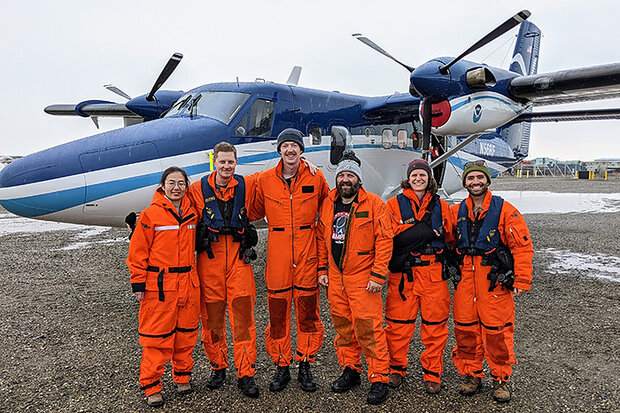Using aircrafts and floats to monitor ocean heat transport in the Arctic

The team of NOAA and University of Washington Cooperative Institute scientists during the first flight mission over Alaskan waters to conduct renewed research on Arctic ocean heat flows. Credit: NOAA

The team of NOAA and University of Washington Cooperative Institute scientists during the first flight mission over Alaskan waters to conduct renewed research on Arctic ocean heat flows. Credit: NOAA
A team of NOAA and University of Washington Cooperative Institute scientists flew over Alaskan waters to conduct renewed research on Arctic ocean heat flows. Scientists deployed 30 floats from NOAA aircraft that will provide key temperature data to better understand how the Arctic ocean is warming.
The team completed the second leg of the 2022 mission from the northernmost point of Alaska, Utqiagvik. They deployed 24 temperature profilers, Airborne eXpendable Bathy Thermographs (AXBTs), in groups of six along four different sections of an ocean slope region. AXBTs are small probes that measure ocean temperature as a function of depth as they travel through the water column. The ocean floor contains a narrow channel where warm water flows into the Arctic, eventually splitting into two flows moving left and right. The goal of this research is to measure the water temperature along this slope and determine the total heat content that each pathway is guiding, including how much of that heat moves in each direction. Determining the heat flow (in both directions) provides important information that contributes to sea ice formation and retreat, as well as effects on downstream algal blooms.
Read more at the link below.